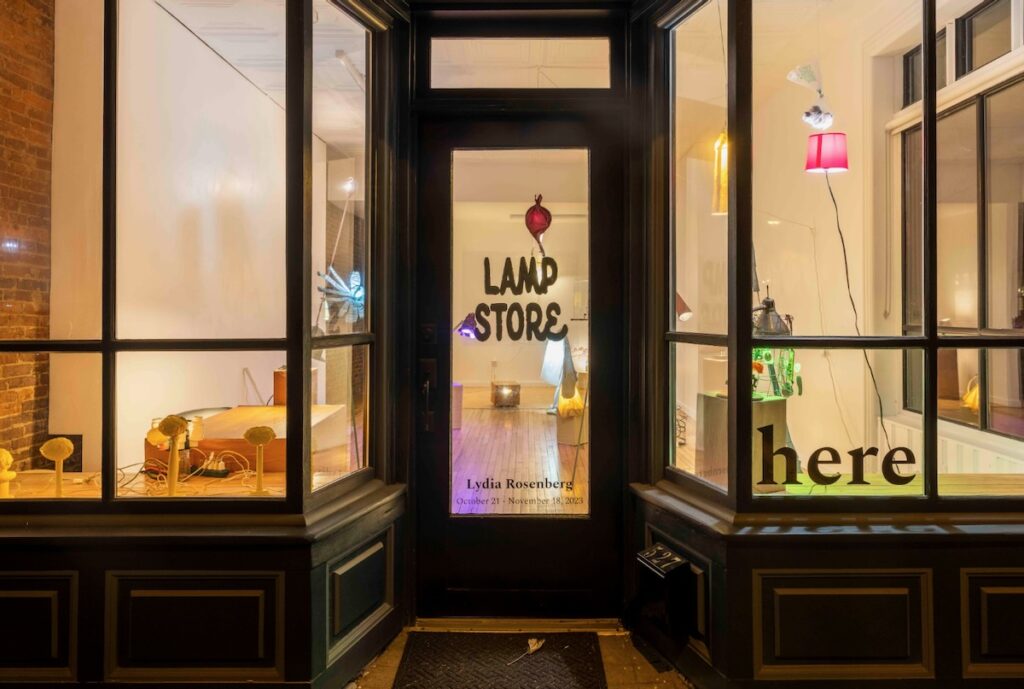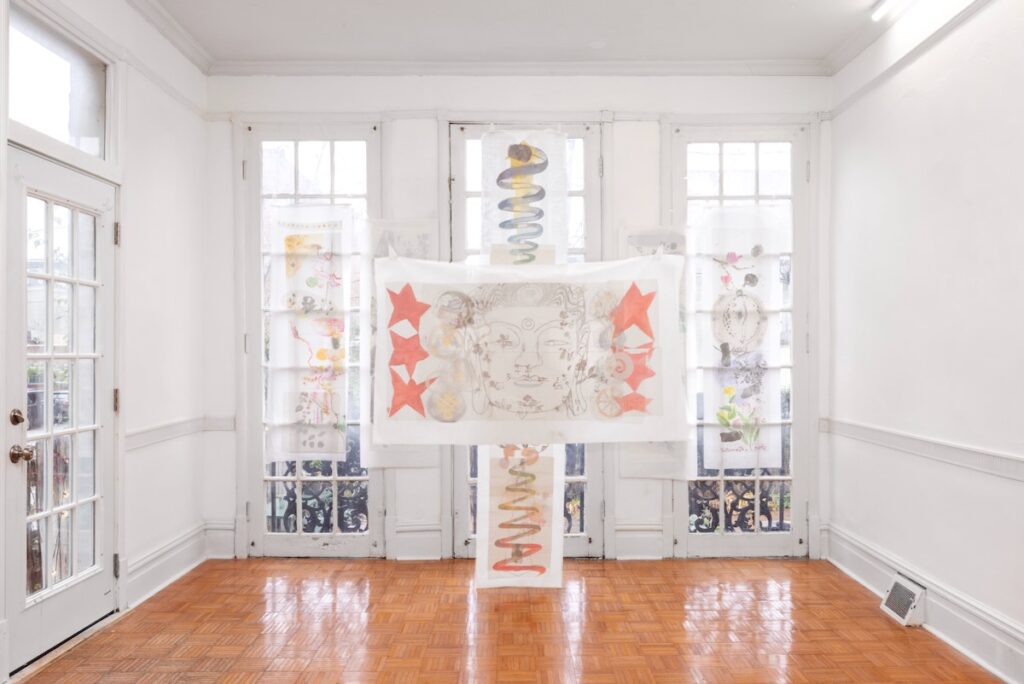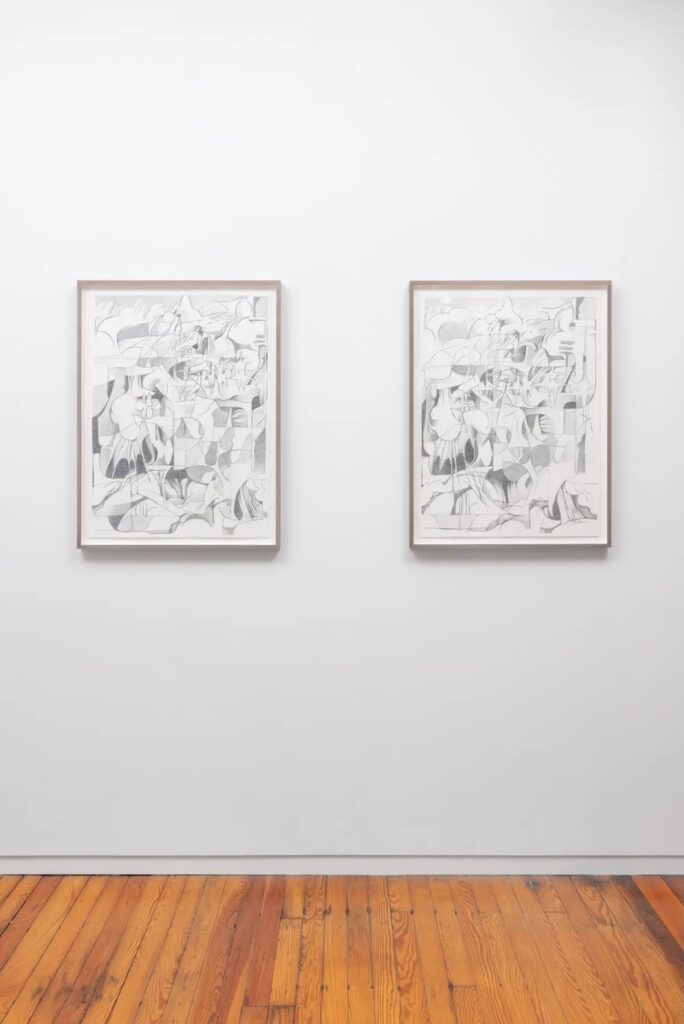When we talk about galleries in Pittsburgh, it’s tempting to follow deep-seated Pittsburghese habits and talk about what used to be. Oh, it used to be a hub of collecting, when the Fricks and Carnegies bought up gleaming hordes of the world’s greatest paintings. Among artists, sometimes this train of thought becomes that Pittsburgh used to be cheap and fun in the days of the Beehive and Electric Banana, before corporate and tech came in.
While there’s some reality to that, one of life’s universal truths is that everyone wants to like something before it was cool. In the 2020s, some major city gallerists are making the trajectory I did as a writer: the reverse of moving to the Big Apple to chase your dreams. Some of the Pittsburgh’s newest galleries are newcomers trying to uplift regional artists while still bringing in new talent. Some are the creations of native Pittsburghers.
Pittsburgh’s Newest Gallerists Share What Drew Them to the City
There’s been a sort of chain reaction of galleries popping up in Pittsburgh, and the domino begins with Lexi Bishop. Bishop ran Here, a small contemporary art gallery in Mexican War Streets, from 2020 to 2023.
Bishop frequently brought in out-of-towners, something that allowed what can at times feel like a cloistered arts community to broaden what they are looking at. Some of Here’s most memorable shows were the beautiful undulations of Canadian painter Kizi Spielmann-Rose’s No Fixed Itinerary, the quiet dignity of New York-based Andrea M. Smith’s Praying for Wings, and the gallery’s finale, the cozy quirkiness of Lydia Rosenberg’s Lamp Store. (Coincidentally, a review of Lamp Store was my first piece in TABLE. Time flies!)

Prior to founding Here, Bishop was Associate Director of Nino Mier Gallery’s Los Angeles outpost and then went on to work at Christie’s Auction House in New York. She came to Pittsburgh with her then-partner and started Here, which closed its doors in 2023 due to not recouping money spent on art fairs and her own changing professional interests. Bishop is not done with the art world, though, as she is now working on a project archiving Pittsburgh’s art history and imagines one day reopening the gallery in Garfield.
To be clear: Bishop by no means “discovered” art in Pittsburgh. There’s a robust arts community and a bedrock of non-profit galleries like Bunker Projects and Silver Eye Center for Photography. Even without the presence of any galleries at all, Pittsburgh would always have makers and creative people. But Here changed the conversation, providing a link between Pittsburgh’s art scene and the wider art world.
Romance: A Pittsburgh Homecoming
Margaret Kross, who now runs Romance, an apartment gallery in Shadyside, grew up in Pittsburgh, so it wasn’t news to her that there could be art here. But she knew Bishop and respected what she did. After working at Paula Cooper Gallery and then moving on to help run the emerging artists program at the Whitney, Kross found herself wanting to return to the world of operating a gallery.

When she moved back to her hometown, she decided to run the gallery out of her own apartment. She enjoys the intimacy it provides and the close relationships with both artists and viewers she gets, even if it means you look at what kind of soap she has in her personal bathroom. “I believe deeply in the role of museums bringing art to a wider audience, but I also think the experience of seeing art in a context outside of the white cube is a very special one,” she said.
A Gallery Coming Into Its Own
It’s been exciting to see Kross’s curatorial vision develop. Chinese artist Emilia Wang’s Heaven Potato, on display in December and January, felt like the gallery coming into its own. Wang’s show of Japanese scrolls and multimedia sculptures was an ambitious concept that fully delivered in scale and scope, making use of the unique lighting Kross has to offer from her French doors. Kross has also found creative ways to use a small side room and her basement—the most group recent exhibition saw a full-room installation from Craig Jun Li in her basement, bathing it in macabre scarlet light.
Romance just completed its first art fair, NADA Miami, in 2024. Kross is optimistic about the gallery’s future. She pointed to the fact that Carnegie Mellon’s graduate art school eliminated its tuition and the development of the former Miller ICA—Carnegie Mellon’s art museum—into ICA Pittsburgh will create more support for visual art in the city.
“The support for the arts here I think has a lot of room to grow. I would love to see more artists be able to live and thrive here and have more connectivity in the conversation here to broader dialogues,” Kross said. “I hope that Romance being here will contribute to that. It’s not because the local is provincial that I believe this connectivity is needed – rather, I think that’s a stereotype that needs to go by the wayside. Bringing in more national and international dialogues will let people see that Pittsburgh isn’t so siloed.”
April April: The New Kid on the Block
Lucas Regazzi and Patrick Bova ran a successful art program out of their apartment in central Brooklyn but craved a simpler, slower pace of life. They knew Kross and Bishop from shared professional circles and wondered if they could move their gallery, April April, to Pittsburgh. In September of 2024, they did just that, packing up their car and moving to a storefront in Regent Square. The street April April sits on feels like a Hayao Miyazaki movie with cobblestoned streets, overgrowth, and quaint historic homes.
Bova and Regazzi are an affable and friendly couple, often seen with their puppy, Dewy. They have a real enthusiasm for Pittsburgh and the local community that comes through in the way they speak about it. “So many reasons for us why we came to Pittsburgh! Zero regrets,” Bova said. “Pittsburgh truly feels like home.” Like Kross, they live in their gallery space, but their apartment is in the back. Their space was once a family-run store, where the owners lived behind it.

An Exciting Time for Pittsburgh Galleries
Bova and Regazzi’s debut show, Paul Peng: Intentions, opened to a full house, and set off their curatorial program with a show both zany and absurd as it was sensual and delicate. They also brought their catalogue to NADA Miami and other small fairs like Art Toronto, where Regazzi is from. “Pittsburgh has been so welcoming to us and our program — grateful and humbling. The curiosity from folks has been nothing short of energizing!” Bova said. Their decision to kick off their programming with Peng, a local artist and Carnegie Mellon graduate with many connections in the DIY side of the art scene, came from visiting his studio while they were still in New York. Since that opening, they’ve shown Hong Kong-born Marisa Kriangwiwat Holmes and a group show with three high-caliber international artists, Kai Jenrette, Cyrilla Mozenter, and Irene Avaalaaqiaq Tiktaalaaq.
To anyone with ambitions of running a gallery in Pittsburgh, Bishop offered this advice: “Engaging with the community is the single most important thing you can do. Work with, not against, the existing art community. Be intentional about your program and who you show. Less is more.” So, keep the support going and attend an opening at Romance or April April for your next night out—after all, looking at art is free, and in a world where so many people are lonely, galleries provide a necessary community gathering for shared experience. Pittsburgh is better for its artists. In this new boom, let’s keep the energy going.
Story by Emma Riva
Cover photo by Chris Uhren
Subscribe to TABLE Magazine‘s print edition.
